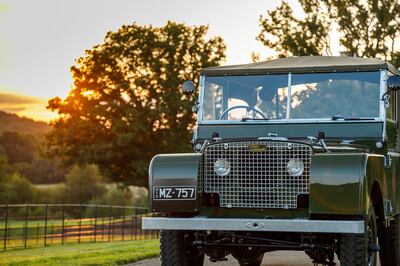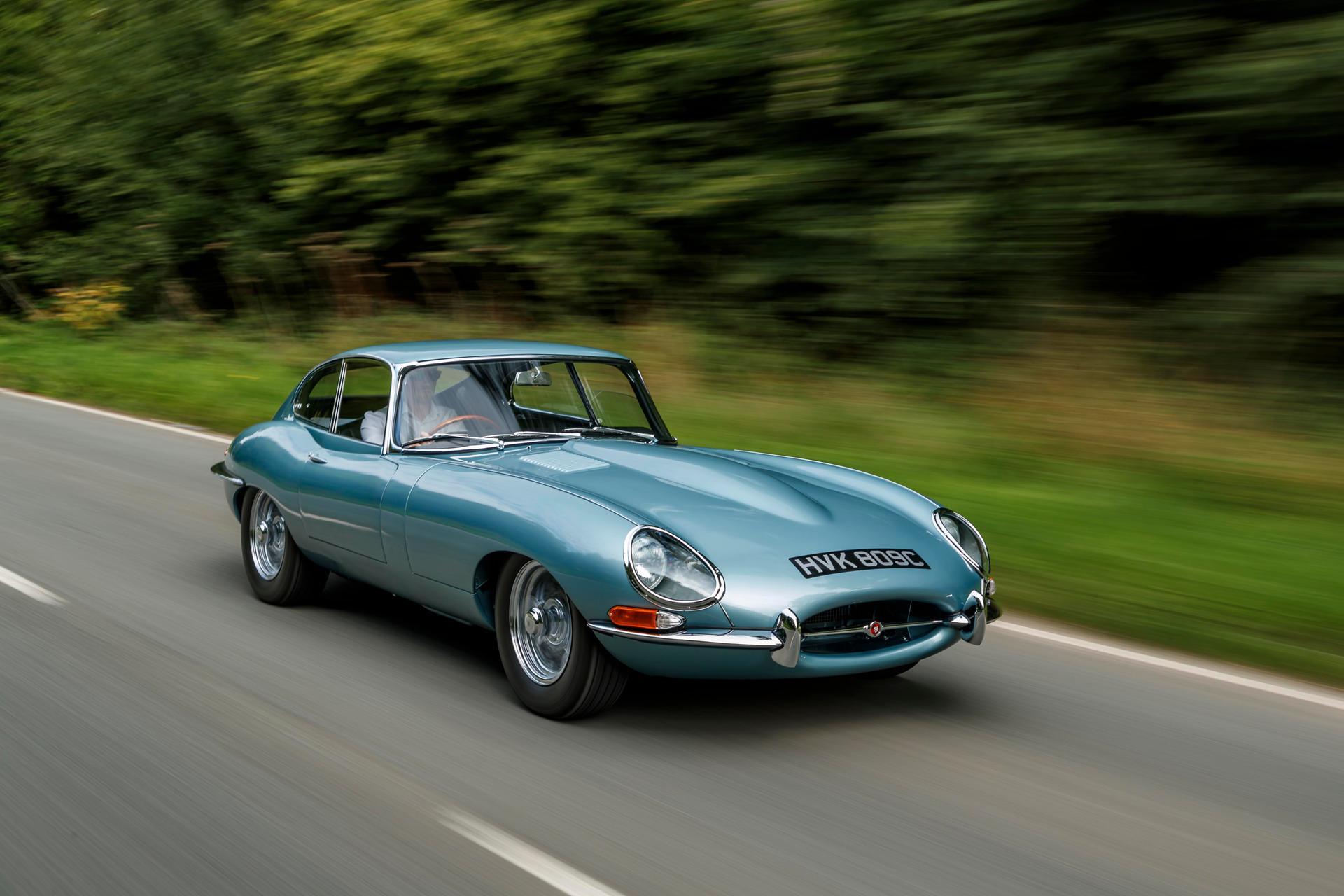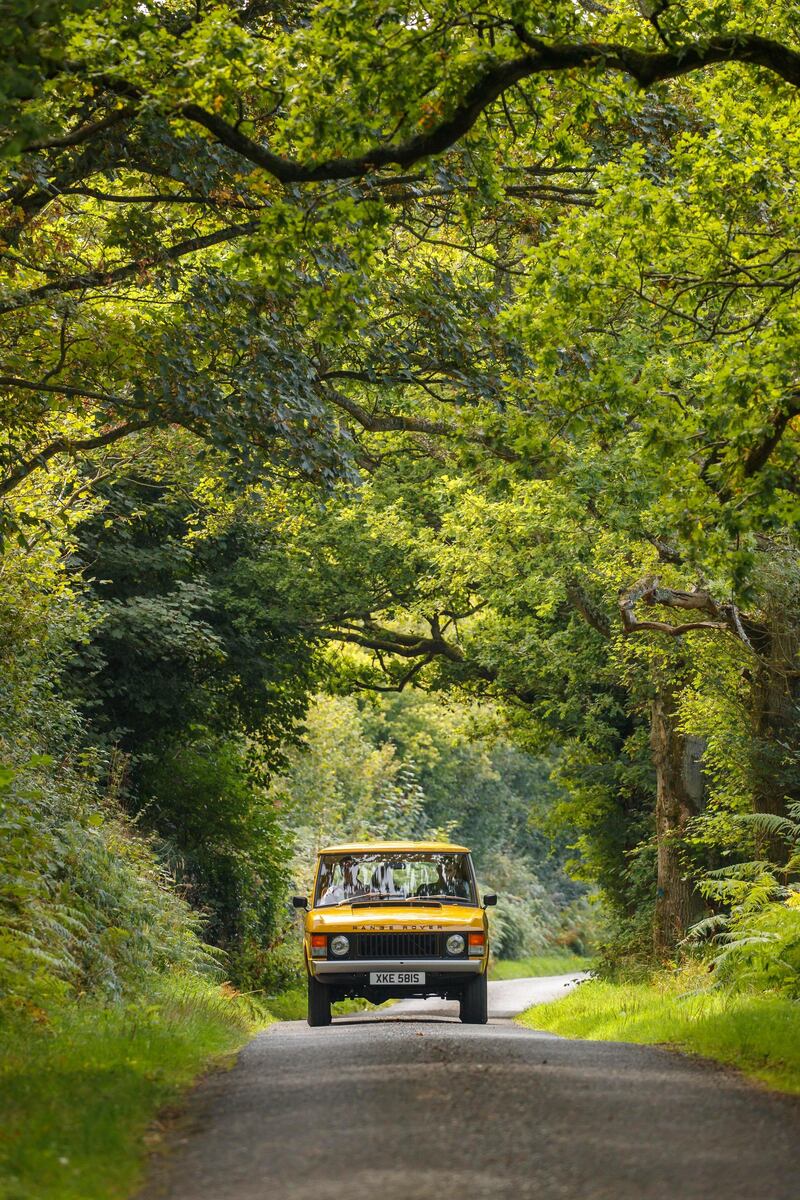"We are in the business of fulfilling dreams," says Tim Hannig, the man in charge of Jaguar Land Rover's Classics division. The idea that buying a classic Jaguar or Land Rover might be a purely financial investment is apparently "invented by guys to convince their wives it's a good idea", Hannig adds.
He might be right. If you want to make a quick buck, buy a limited-edition Porsche 911 and sell it straight on. If, on the other hand, you are in love with the character of the original post-war Land Rover or the 1960s E-Type, you must head to JLR's order books and wait your turn to tell your story.
The Jaguar Land Rover Reborn Series was launched two years ago. The project takes old Land Rover Series Is, Jaguar E-Types and original two-door Range Rovers, and restores them to their foremost beauty – fresh out of the salesroom, as it were.
This takes a lot of money, time and skill. First, a customer joins a waiting list with his specific request (and boy, do they get specific – one customer wanted the team to find the precise 1949 Series I that was exported to Botswana in May of that year. They failed to source the exact car, but did find another one from the same month).
The experts then go hunting for donor cars, preferably in dry-climate countries such as Australia, which has a healthy supply of old Land Rovers. They take them to the United Kingdom, strip the cars down to their individual components, painfully source replacement parts, or manufacture some themselves if they can't find any, and then build the cars without paint to make sure the shut lines are appropriate.
Then, they take the whole car apart again, check the engine, trim and body, put it all back together and paint it. The result is "better than the original", according to Hannig, the idea being that people buy these cars not simply as a curation of the past, but also in order to run them as modern, everyday cars, with the implied reliability and comfort.
All this comes at a significant cost, which means the cars go into the hands of real purists and passionate advocates of the two brands. "We do the bad news first, and that's the price," says Hannig. A Series I Reborn starts at £75,000 (Dh359,744), a Range Rover Reborn at £140,000 and a Jaguar E-Type Reborn at £295,000.
Even then, you'll have to wait: all three models were announced in limited-edition numbers of 10 or 20, and although the company has pledged to keep going as long as it keeps finding donor cars, the time from sourcing to handover is up to two years.
So, is it worth it?
We got a first drive of all three at the Goodwood Revival in southern England, a fantastic three-day classic-motorsport event that takes place every September. The Revival celebrates the glory days of Goodwood's motor-racing circuit, from 1948 to 1966. Fittingly, the first Series I rolled off the production line in 1948 and the Jaguar E-Type we drove was a pristine 1966 example. Only the original two-door Range Rover, which first appeared in 1970, sits slightly outside the period, but as it's such an iconic and wonderful model, we can gloss over that.
The Series I badge was applied to the Land Rover retrospectively, with the arrival of the Series II; when it launched, it was simply The Land Rover, built as a very simple off-roader with all the engineering in plain view and limited creature comforts. tHIS means that a Reborn example is still an extremely utilitarian car to drive, with no luxury of power steering, no synchromesh between gears, a heavy clutch pedal and stiff gearbox. A metal lever with a bright red plastic handle takes the gears into a low-range setting, which means that the 50 horsepower engine will chug happily up steep inclines, but you will most certainly shake, rattle and roll all the way.

Thankfully, Land Rover ignores the fact that the original example came minus doors and roof, and has applied both as standard. But this car, with its drum brakes and appetite for petrol, remains for lovers of the original, with a hardy sense of adventure.
A more luxe experience (relatively speaking) is the beautiful two-door original Range Rover. When it launched in 1970, such was its exemplary industrial design that it was the first car to earn a spot on display at the Louvre in Paris. We were allowed behind the wheel of a 1978 version, the first example off the Reborn production line.
This pristine example is painted in the original Bahama Gold (a fantastic 1970s mustard yellow to you and me), with four equally original shades of slightly clashing palomino (beige) inside. If you are a hardcore fan, you can specify the hose-down vinyl trim of the first cars (the more expensive, £170,000 Suffix A and B models of the early 1970s). But our version was thankfully decked out in brushed nylon, with a herringbone pattern, which came later and makes the rear bench seat seem a very plush place to cosy up.
You can specify wing mirrors on the doors, or in their original place on the bonnet. If you're going to have passengers, you can have seat belts fitted in the rear, although it rather ruins the pure lines of the thin metal bodywork and huge glass windows. The Range Rover was also the first car to use inertia seat belt reels, which means the front occupants' ones are embedded in the seats, with no headrests for support.
This is a great car to drive, although we did get into it straight from the truculent Series I, so our opinion might be tainted by the sudden leap from 1940s to 1970s engineering. There's a huge, thin, plastic steering wheel, a very plastic dashboard (the actual 1970s plastic was reproduced by Jaguar Land Rover) and a long gear lever that will eventually select a gear – our car had so few miles on it that first gear was entirely elusive, but the torque from the V8 engine means the car happily pulls away in second.
On the road, it's a stunning sight, both for passers-by and the occupants, who have so much visibility from the large windows, it's like sitting in an elevated greenhouse. It takes just a few moments of being inside the Range Rover to understand why this model is still on sale today, 40 years later. Once an icon, always an icon.
Speaking of which, the Jaguar E-Type Reborn will be, for many, the jewel in the Reborn Series.

While £295,000 may seem like a lot, original E-Types easily fetch half a million pounds at auction these days. Customers can choose from the full gamut of E-Types originally built: coupé, convertible, left-hand or right-hand drive, with a 3.8-litre or 4.2-litre engine. Not every wish is answered, though: "We wouldn't do certain colours as it's not suitable for the brand," says one of the development engineers. On the other hand, this car came out in the 1960s, so the standard pallet is extensive, and includes yellows and maroons.
The typical restoration process on an E-Type takes 14 to 16 months. Can you feel 3,000 man-hours of craftsmanship once inside the car? Yes and no. Yes, because it's simply gorgeous, with original seats covered in brand-new leather, and 80 per cent to 85 per cent of the original car returned to better-than-new condition. That elegant long bonnet sniffs its way instinctively around the corners, the suspension soaking up ridges in the road, but still taut.
On the other hand, the passion for the E-Type endures precisely because this was such a modern car in its day. Or rather, it was a timeless car when it was first launched – miles ahead of its time, but of its time; a celebration of the culture of the day, with nods to Jaguar's heritage and also the future. One might argue that all Jaguar essentially had to do is polish the crown jewels.
But then, who better to do the polishing than a group of men and women who are in many cases the second and third generations of their families to work on these vehicles in Jaguar and Land Rover factories? You can argue about the high cost of these cars, the long time taken to restore them, or even the length of the waiting list, but you just can't argue about the love, passion and integrity of the project. And that's almost priceless.
____________________
Read more:
[ Purple and powerful: the out-of-this-world car collection of Dubai social-media star Natalia Itani ]
[ Here's a look at the Dubai Police's new electric car addition ]
____________________






